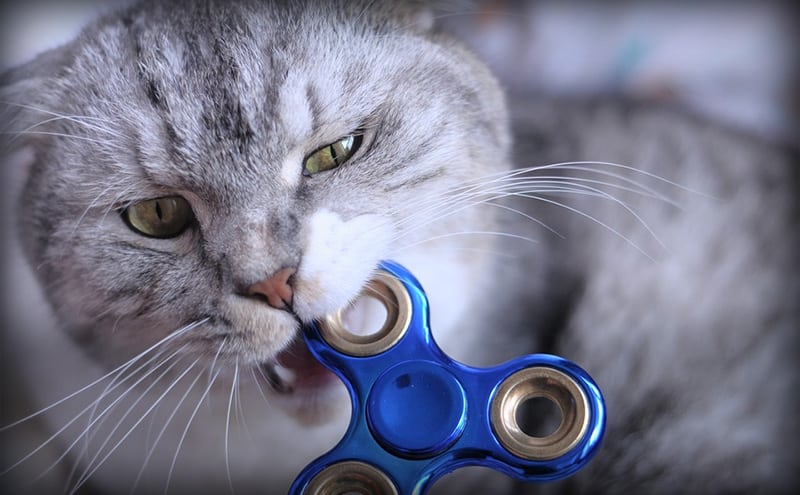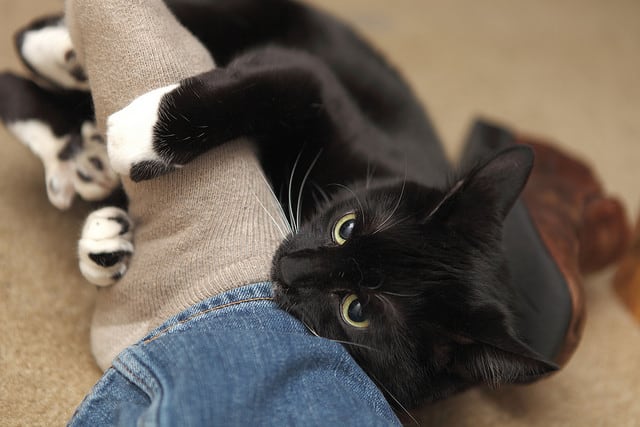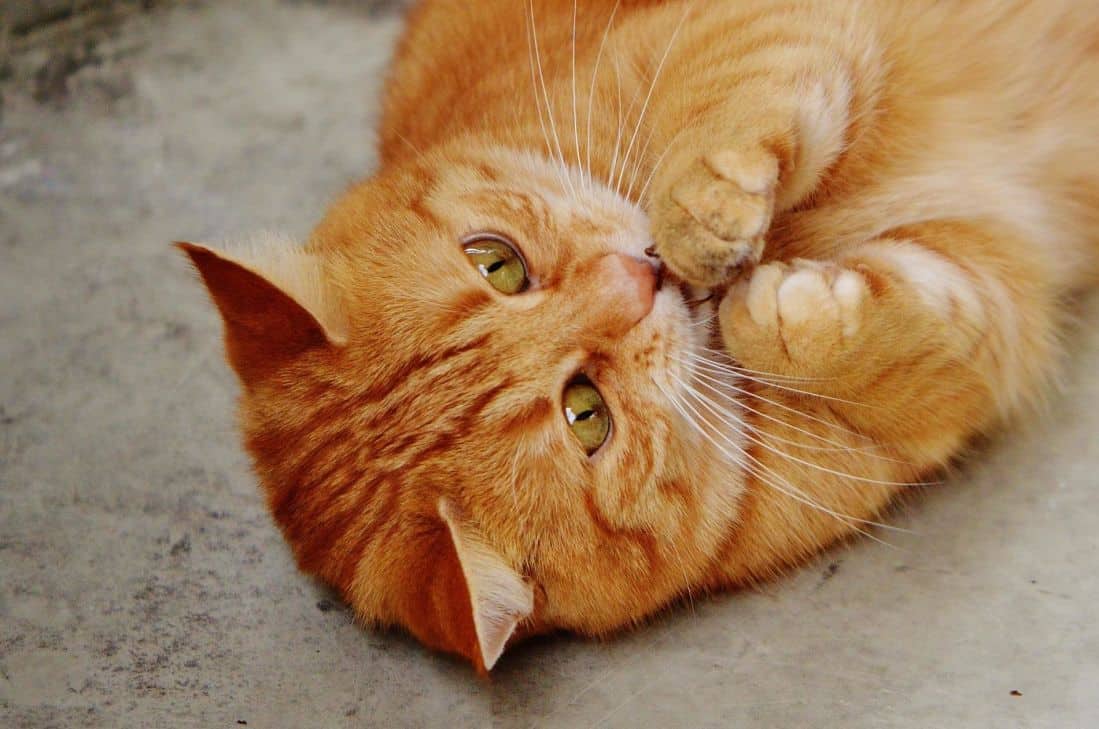5 Tips to Stop Your Cat from Biting
Whilst those teeth might look tiny, a nip from a cat can be painful and runs the risk of causing infections. The tricky thing is trying to get your cat to stop biting. Firstly, it’s important to understand the different reasons cats may bite. Secondly, we’ll run through some different technique to train your cat not to bite.
Most cats aren’t aggressive by nature and it’s likely that by biting they are trying to communicate distress or displeasure. For example, if your cat is not enjoying how you are playing with them, then they may snap at your fingers. If they are experiencing pain, they may try to bite you when you try to examine the area. Biting is actually quite useful in these instances because it helps you understand something is wrong with your cat. However, biting otherwise should be discouraged in your cat’s behavior.
Often cats can get carried away during play fighting and start biting. All cats and especially kittens need to play; it is important for their physical coordination, social skills and problem-solving. Playing mimics the kind of skills cats need in the wild, such as stalking, pouncing, swiping and biting. The problem for cat owners is that the biting can often get out of hand when it is directed at humans, especially if there are small children or non-cat lovers in the house.
Cats’ play takes two different forms: social and solitary. Social playing involved other cats or humans, whereas solitary play is with objects like toys, string or boxes. Problems arise when cats confuse the two types of play and direct the feline social play towards humans. Biting is common when this happens and is often the result of a cat getting overexcited. This can be particularly tricky when your cat has decided it wants to play whilst you’re asleep and treats your toes like another cat!
Playing can also turn to biting if the cat doesn’t have any other cats to play rough with. If you live with an indoor cat who is under one year of age and you’re his only playmate, the chances are he is treating you like another cat, rather than being aggressive.
Occasionally, biting is the result of aggression. Most cats aren’t naturally aggressive towards humans; their aggression is usually a product of a specific situation. If your cat is scared, perhaps because they see another unfamiliar cat, their aggression may be transferred to you if you are in their path. To understand whether your cat is likely to react in an aggressive way, it is important to understand their body language. If your cat is rigid, with an arched back or if they’re growling, hissing or spitting then they are in an aggressive mood.
Now that you understand the reasons why your cat may be biting, you can learn some techniques to try and limit this behavior.
Contents
5 Easy Ways to Stop a Cat from Biting
1. Stay Calm
Don’t hit, shout, chase or lose your temper with a cat. If you do, then at best you will confuse and upset your cat. At worst, you will become an object of fear to your cat and they’re more likely to behave aggressively towards you in the future.
2. Don’t Engage Further
If your cat bites you, don’t continue to play with them or engage in whatever activity you were doing. If they were playing, you don’t want to reward their bad behavior with more fun. If they bit you because they were uncomfortable, then you don’t want to make this worse.
Stop touching your cat and move well away from them so that you are no longer in biting range. Avoid soothing or stroking your cat after biting, even after you have given them a “time out”. If you cuddle your cat after disciplining them for biting, then you are sending mixed signals. Your cat may even infer that they need to bite you in order to get a cuddle. For the same reason, you shouldn’t feed your cat for at least 20 minutes after a biting incident, as this could be taken as a reward.
3. Give Them Space
If you think your cat might be biting out of aggression, then you need to give them some space. If you are blocking the cat’s exit then move out of the way and don’t move towards them. Try to view the situation from the cat’s perspective; if they don’t see an escape from what they perceive to be a threat, they will attack and bite you. Let the cat pass you and calm down and they probably won’t try to bite.
4. Voice and Body Method
This one worked wonders with my cat. As soon as the cat bites or scratches, tell them “NO!” in a loud, authoritative voice. You should also point your finder and stare at them directly with an unimpressed look. Cats regard stares in the wilds as a sign of dominance, so this technique should show your cat who’s boss. You can also try clapping loudly when you shout “NO!” as this may shock the cat out of their mood. Only try this with cats that are confident or cheeky, as doing this to a timid or nervous cat may scare them and actually cause them to bite more.
5. Give Them Attention (Before They Bite)
Playing with your cat regularly is likely to mentally stimulate your cat as well as physically wear it out. A tired, happy cat is far less likely to bite than an energetic, bored or frustrated cat. Encourage your cat to play with toys that aren’t your fingers so that they are less likely to bite you. You can try laser-light pointers, fishing toys or even a traditional ball of string. This should keep your hands free of bites!
By understanding why your cat is biting, seeing the situation from their perspective and following these tips, you’ll be able to stop your cat from biting. It can take a little time to change habits but stick with it and you should start seeing results!
![]()




